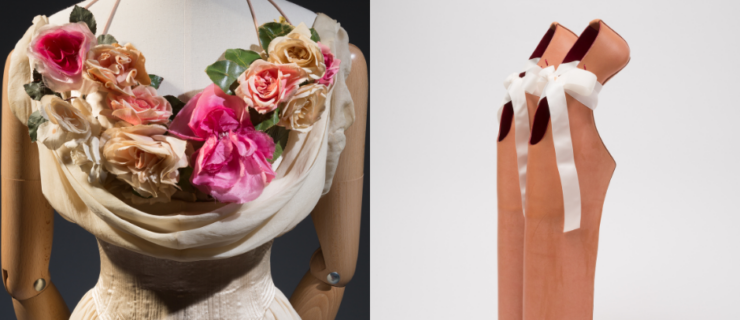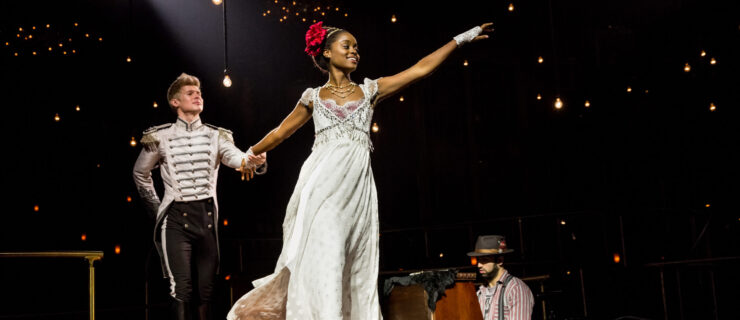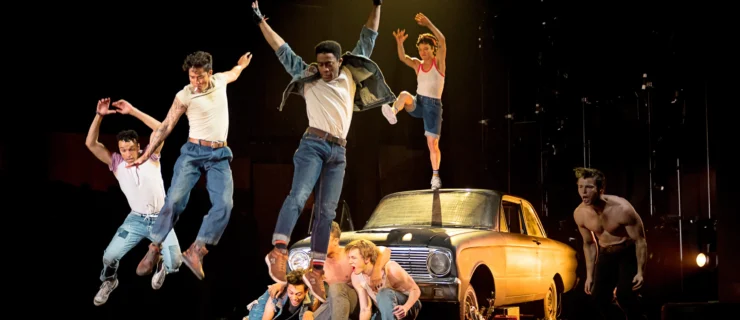Bolshoi Ballet
Bolshoi Ballet
State Academic Bolshoi Theatre, Moscow, Russia
May 15–16, 2005
Reviewed by Clive Barnes
Just as Balanchine, born and trained in St. Petersburg, is a son of the Maryinsky Ballet, so Massine, born and trained in Moscow, is a son of the Bolshoi. Of course, Massine is hardly the touchstone of the Bolshoi style that Balanchine is of the Maryinsky. Nevertheless it was a wise move by the Bolshoi’s artistic director, Alexei Ratmansky, to stage a triple bill of Massine ballets, the first ever to be seen in the choreographer’s long-lost homeland.
Ratmansky went to the choreographer’s son, Lorca Massine, once a member of New York City Ballet, to mount this program that was intended to offer something of Massine’s range: an early ballet for Diaghilev, The Three-Cornered Hat (1919); his first “symphonic” ballet, Les Présages (1933); and his comedy Gaîté Parisienne (1938). Unfortunately, just as Fokine’s daughter Isabel is hardly the final authority on her father’s choreographies, so Lorca Massine’s versions of his father’s ballets vary sharply—and disagreeably—with my memories of the originals, as staged, and often danced, by Massine himself.
The Bolshoi versions of The Three-Cornered Hat and Gaîté Parisienne were disappointing indeed. The Picasso setting for Hat was accurate (although the huge proportions of the Bolshoi stage did it no favors) but the costumes, though well intentioned, were a mess. Lorca Massine’s choreography, at best a fuzzy reproduction of a great original, was dramatically feeble and poorly danced. As the Miller, Ruslan Skvortsov couldn’t compare in technique to Massine, who was 52 when I first saw him dance it in 1947.
The same could be said of Gaîté Parisienne, a ballet of less importance, yet filled with frothy, impudent fun. (Le Beau Danube would have been a better choice for the Bolshoi.) In any case, Lorca Massine’s version of Gaîté Parisienne was burdened with dismal designs ascribed to Raimonda Gaetani, the settings dimly cribbed from Etienne de Beaumont’s original, the costumes just plain awful. And the performances lacked as much in zest as they did in authenticity.
A partial exception to this parade of mediocrity was Les Présages, which choreographically and stylistically proved a marked improvement on the other two. It too was staged by Lorca Massine, assisted by Anna Krzyskow, but also by the Joffrey’s Cameron Basden. Franco-Brazilian ballet mistress Tatiana Leskova mounted a splendid Les Présages for the Joffrey in 1992, and this Bolshoi revival seemed to come more from Leskova than from Lorca Massine. The performances had far more bite, clarity, and assurance. Natalia Osipova as Frivolity didn’t have the effervescent bubble of Tatiana Riabouchinska, who created the role in 1933, but I have never seen the Hero (Alexander Volchkov) danced with such fiery brilliance. And Svetlana Lunkina shimmered as Passion. This was a wonderful new cast and a great revival, and with the lustrous playing of Tchaikovsky’s Fifth Symphony by the Bolshoi orchestra, it made a new case for Massine’s choral-like choreography, despite his admittedly heavy-handed symbolism.
But there was a fly even in this emollient ointment. Instead of restoring Andre Masson’s striking expressionist scenery and costumes, the Bolshoi commissioned new designs from a young Russian couturier, Igor Chapurin, whose pretentiousness was outmatched only by his tastelessness. So despite its beautiful dancing and choreographic integrity, the revival failed to deliver on its full promise. The sad fact is that the concept of Leonide Massine at the Bolshoi was a great idea gone wrong—and Ratmansky is responsible for both the good and the bad, the concept and its execution.
Now to more cheerful thoughts. The following night was the “Homage to Ulanova” program, which included tributes from Mats Ek, Jirí Kylián (on video), John Neumeier, William Forsythe, Boris Eifman, and Maurice Béjart, and ended with something very appropriate to Ulanova’s heart, The Dying Swan, danced by Kirov ballerina Ulyana Lopatkina. Before this modernist divertissement came the complete Shades scene from Petipa’s La Bayadère, exquisitely danced by the company and led by a floatingly delicate Nadezhda Gracheva and a brilliant, stalwart Andrei Uvarov.
For more information: www.bolshoi.ru/eng/sales.html



